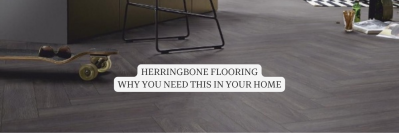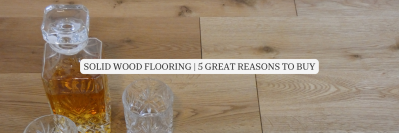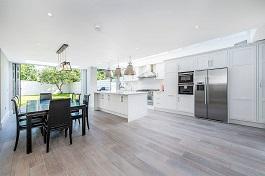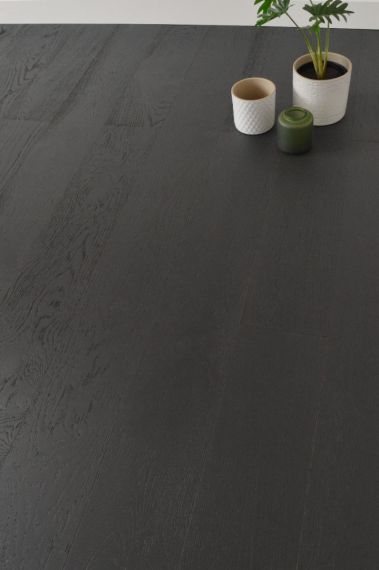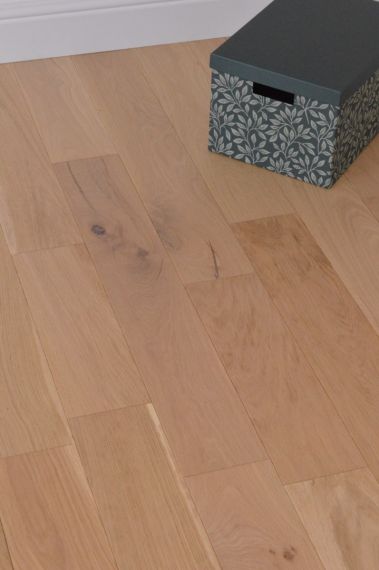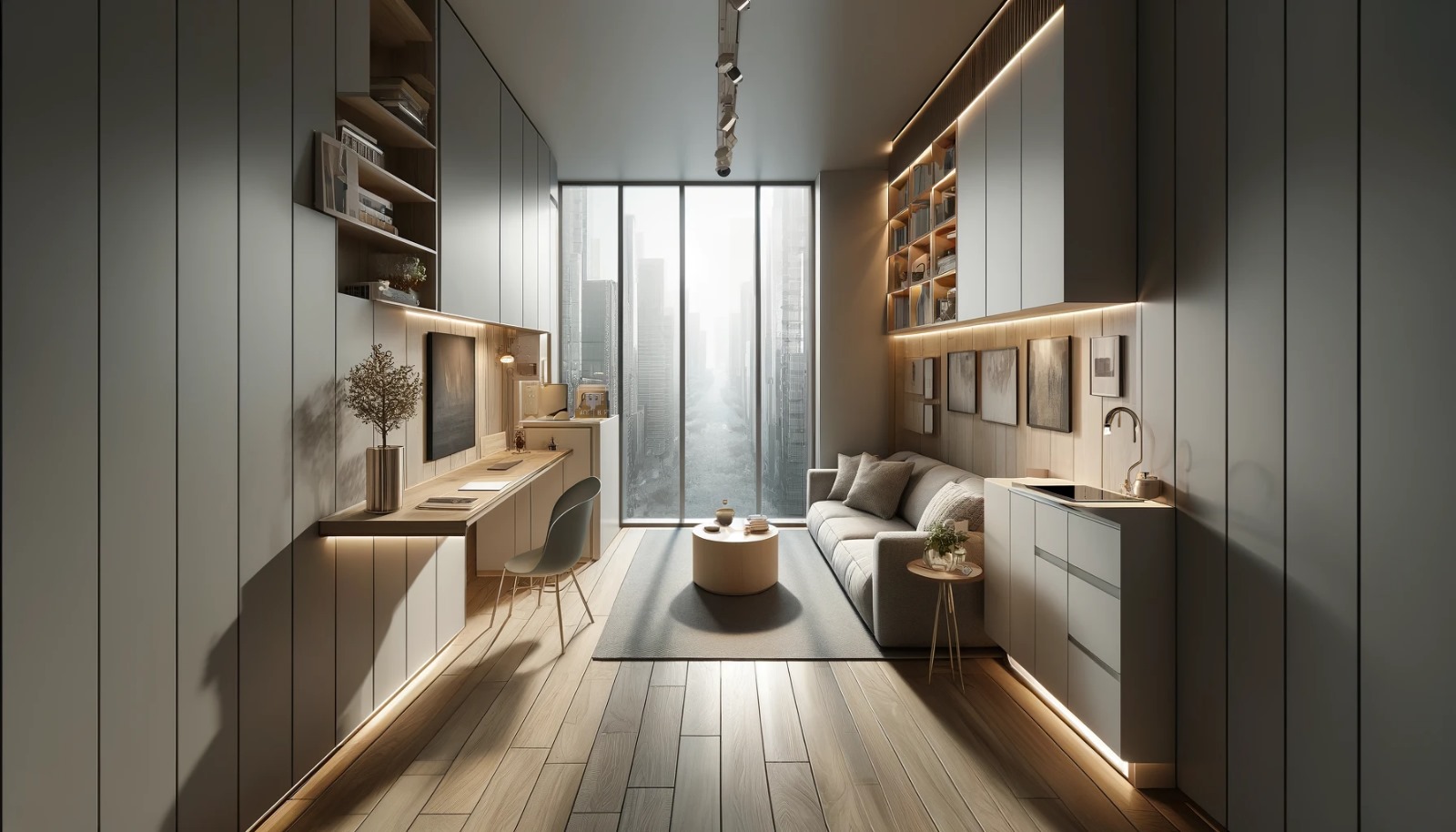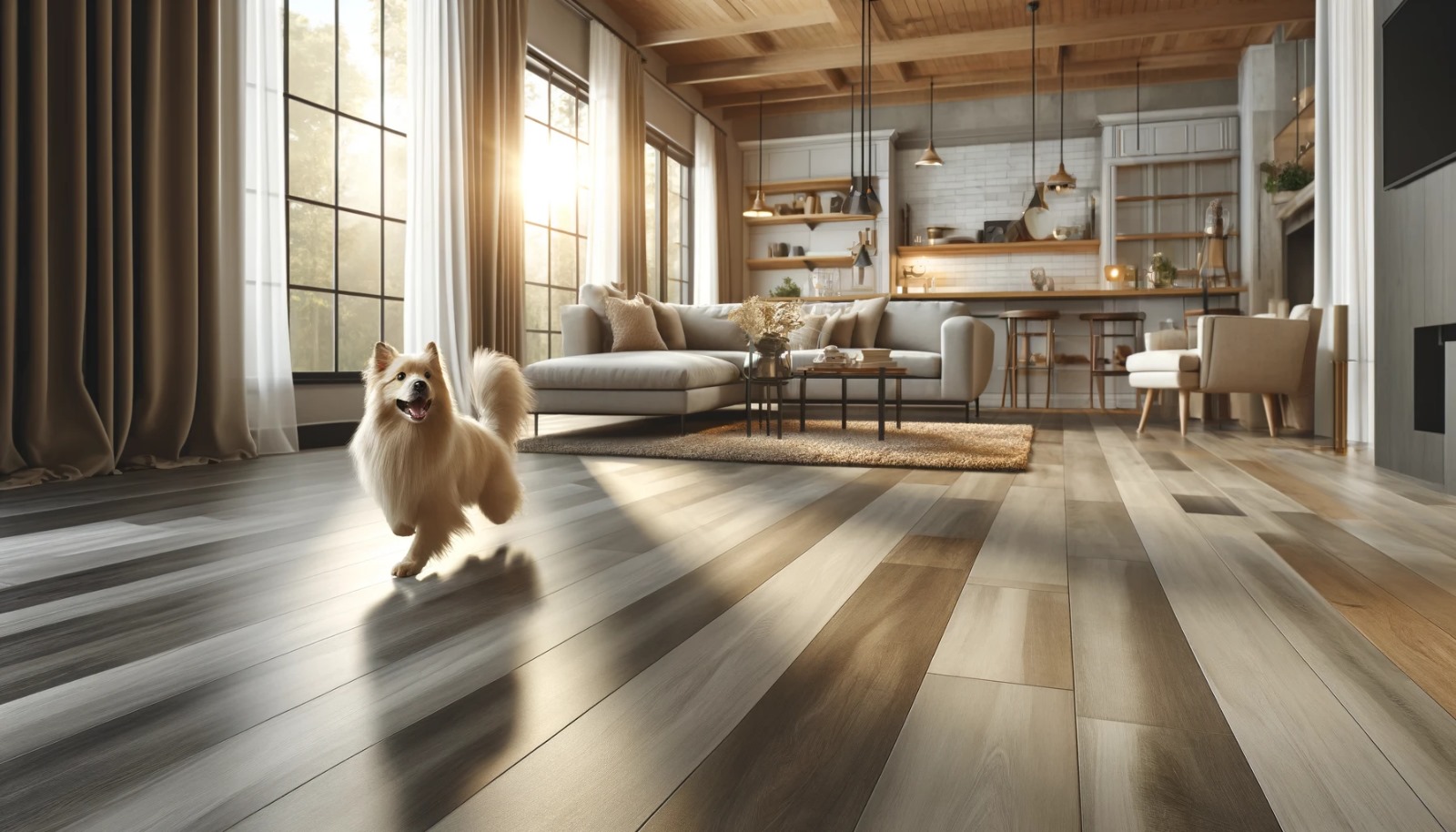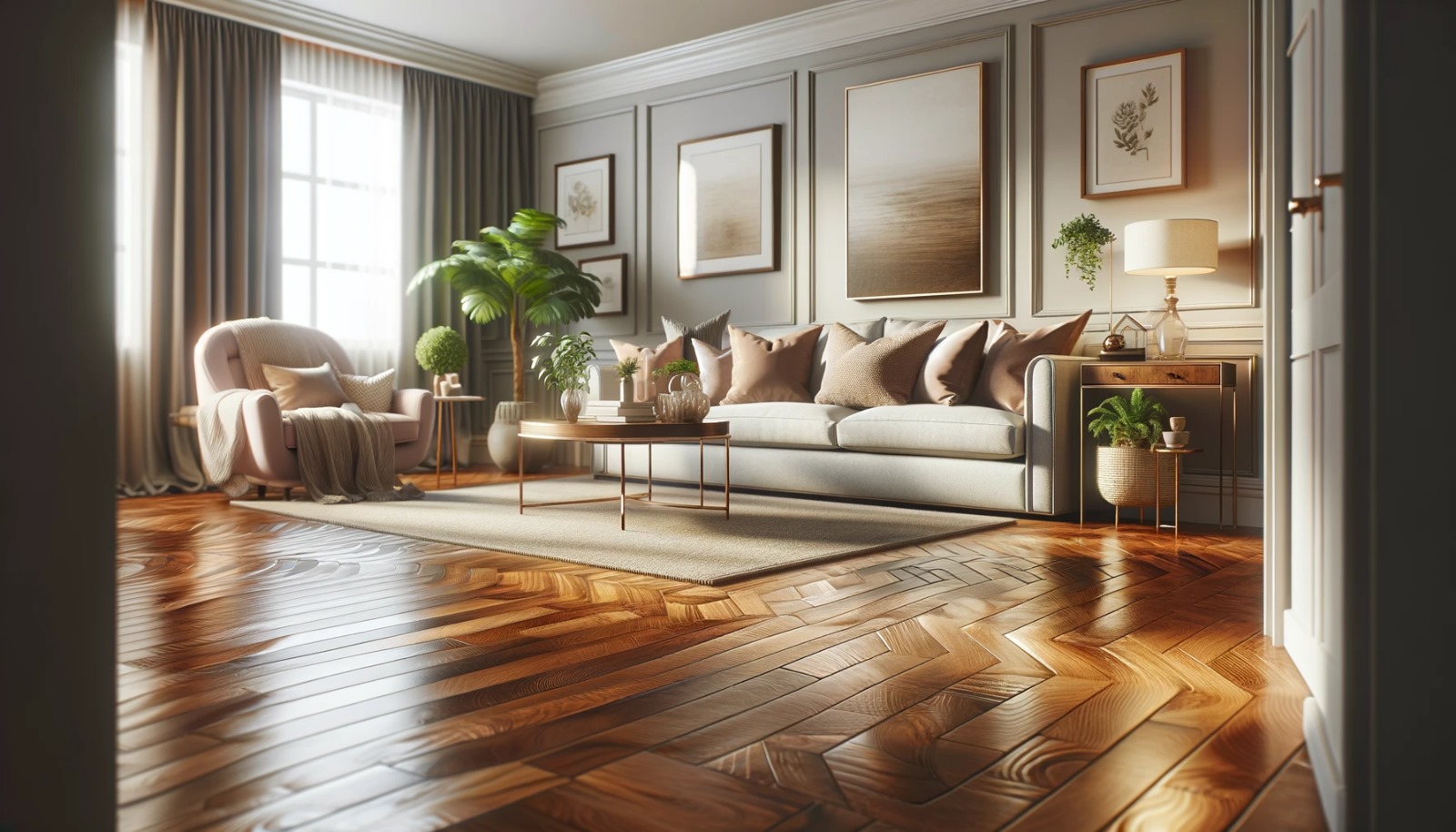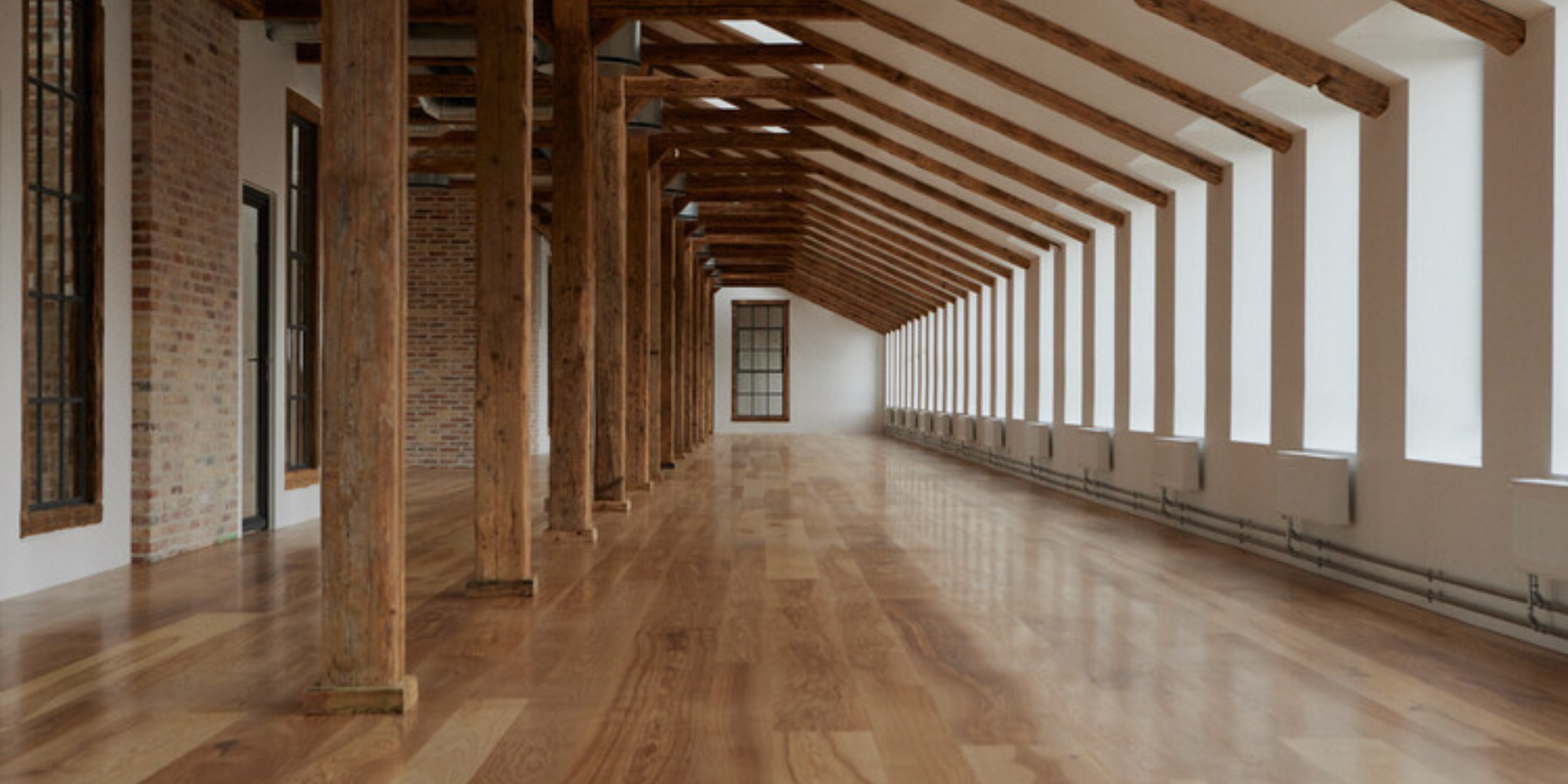

Wanting Engineered Wood Flooring? What You Should Consider

5 Things To Consider When Buying Engineered Wood Flooring
One of the most popular flooring materials on the market is engineered wood flooring, which offers added quality and feel over laminate flooring, but delivers on budget compared to solid wood flooring. Due to its manufacturing process, engineered wood flooring is more sustainable and is built to last. This makes it an ideal choice for your home, be it in a city apartment, country cottage or a busy family home.
You’ve got this far, so seems that you’re thinking about an engineered floor for your home. That’s great news as it is a stunning and versatile option for you. What else do need to consider though before you commit? This blog reviews some of the factors you should think about when choosing an engineered wood floor and it is designed to help you pick the perfect option for you, but before we do lets go back to basics.
What Is Engineered Wood Flooring?
Engineered wood flooring is a type of wooden flooring which has a solid wood top layer, also known as the ‘veneer’, or ‘wear layer’. This top layer is the aesthetic part of the flooring, can be anything from 1mm to 6mm thick and will be in the shade or finish of your choice. Underneath the top layer you get structural sublayers, usually made of pine, poplar, high density fibreboard or plywood.
There is no doubt that when comparing size, finish and thickness, engineered wood flooring is more cost effective than solid wood, but don’t let this fool you. Engineered Wood Flooring is surprisingly durable because of this construction. The backing layers of engineered wood flooring have been designed to be fitted, usually at a 90 degree angle, giving it greater integrity and making it less susceptible to changes in shape under pressure or moisture, or due to flexing.
As mentioned above the key component of engineered wood is the top layer, with veneers ranging from 1mm to 6mm, as well as the texture, natural wood grain and finish all affecting the price and longevity of the floor.
What’s The Difference Between Engineered Wood Flooring & Solid Wood Flooring?
We’ve talked about engineered wood being a composite plank consisting of a top layer and sublayers, however solid wood, as the name suggests, is made entirely from one piece of timber and one species. Solid wood also comes in a wide range of colours and finishes as well.
Both of these types of floors are fantastic and have great benefits, including the overall authenticity of solid wood flooring and the lower maintenance of engineered wood, however, we really love wood flooring and believe that both are ideal choices for your home, leaving you with a choice between style and budget.
Our Top 5 Engineered Wood Floors
<
- Croal Oiled Natural Oak
- Holden Brushed And Lacquered Natural Oak
- Croasdale Oiled Natural Oak
- Bolham Brushed And Oiled Natural Oak
- Coledale Matt Lacquered Natural Oak
Engineered Wood Flooring. 5 Things To Contemplate
Is It Right For Your Home?
Engineered wood flooring with it real wood top layer does require slightly more maintenance than some other flooring types like laminate and LVT. It’s important that spills are cleaned as quickly as possible to prevent lasting damage, especially so with an oiled finish. It is also important to avoiding dragging furniture over boards or using abrasive material, which will reduce scratching of the floor, although all hard flooring types could scratch.
Wood has been used as flooring in homes for hundreds of years and as you’d expect it performs exceptionally well in most home situations, including busy family homes.
Which Room Are You Using It In?
Depending upon the room you’re planning to use it in there are some limitations to engineered wood flooring and a couple of things to consider are:
- What are the conditions like?
- What is ‘traffic’ like?
Conditions
Whilst it’s perfect for living areas such as the dining room and lounge, engineered flooring isn’t waterproof, so it is not ideal for higher humidity rooms such as the bathroom.
Engineered wood flooring can be used in kitchens more easily than solid wood and this is due to its construction, however this does come with a caveat, in that you need to ensure spills are cleaned immediately to prevent water damage. Lacquer adds a greater level of protection due to its impermeable layer.
Maintaining a dry floor and continually cleaning up water is virtually impossible in the bathroom, which would ultimately result in warped, damaged planks with a potential to get a delaminated veneer. Slight imperfections when laying the floor could result in water penetrating under the floor causing damage, meaning anything short of professional installation could create problems; which is why we don’t recommend engineered wood flooring for bathrooms.
If you have to have a wood look floor in high water areas such as bathrooms then Luxury Vinyl Tile Flooring (LVT Flooring) might be the best option for you. LVT flooring has become very popular over the last few years.
These days LVT has realistic texturing and grain, looking and feeling like wood and is available in planks or herringbone, so it’s highly likely that we have a style that replicates the wood flooring look you are after.
Traffic
This refers to the volume of footfall you will expect in any room during day to day use. A hallway or stairs for instance would be considered ‘high traffic’ as people use them regularly On the other hand a spare bedroom or home office could be classed as ‘light traffic’ if they’re not always in use.
You may ask why does traffic matter when it comes to choosing your flooring? Well, higher traffic areas need to be more durable and more hard wearing. Lighter traffic areas however, will be fine with a more light-weight and potentially more cost effective option.
Thanks to its wood wear layer and composite plank structure Engineered wood flooring is incredibly hard wearing and that means it’s suitable for all traffic areas. if you are looking for an engineered floor for higher traffic areas you might wish to consider those with a deeper wear layer such as a 4MM wear layer or more.
What Sort Of Style Are You Looking For?
At any rate, one of the biggest factors in choosing your new flooring is how good it looks and when it comes to style options, range of colours, wood species and available finishes there’s no better choice than engineered flooring. It’s safe to say there’s pretty much a perfect match for everyone.
Contemporary
Pared back wood patterns with stark colour schemes work best in contemporary settings. Think about a warm golden oak or a luxurious smoked grey oak as a vivid mood for your room, where furniture and wall colours can take precedent. Alternatively, if you’re using a limited palette consider an rustic or deep brushed floor, which adds interest by bringing in some contrasting texture.
Timeless
If you’re looking for a style that won’t date then natural oak is definitely the way to go, as natural oak flooring is one of the most versatile finishes on the market and is always in style. Most oak flooring is available in brushed or oiled finishes, depending upon your preference to give a classic, natural wood feel.
Traditional
Darker flooring can add a warm, heritage feel to your home. Traditional charm can be created with coffee, smoked and golden oak engineered flooring which are all popular choices. For an extra level of elegance you could choose parquet planks which some engineered flooring is available in.
Farmhouse & Country Style
For farmhouse and country style homes the keyword is wood grain, where the expectation is for heavily knotted, aged flooring with dark lines through it. These should be a staple in any country kitchen or farmhouse lounge.
We think natural and lighter choices help set off farmhouse features a little better, however the colour is a case of personal preference. An oiled finish adds an extra level of protection as well as maximise light. Our top rustic looking floor? Aldford Natural Oak Distressed and Oiled.
What Sort Of Budget Do You Have?
Engineered flooring works out as great value for money and delivers real wood elegance at laminate prices. There can however be some big differences in cost from one range or style to the next. Taking these reasons into account should help you decide on which is best for you.
Thickness and Width
The thickness of your planks will influence the overall cost and generally speaking, thicker flooring is a little more expensive per m² than thinner flooring. Wider planks also tend to be slightly more expensive, but they do offer the added benefit of being quicker to fit as there are fewer boards overall.
Wear Layer
The wear layer will play an important role in budget as the thicker top layers of veneer are more expensive. It’s important to state that thicker top layers can be sanded more times over their lifetime, meaning more opportunity to refresh the appearance of your flooring and make it last longer. Altogether though you’ll still end up with a superb looking wood floor that lasts for years regardless of the thickness or wear layer you choose.
Wood species and finish can also affect the overall cost of your engineered wood flooring, with more exotic species and labour intensive finishes costing more.
Put it into general terms the thicker, wider floors with a deep wear layer will cost more, however some of our widest, thickest boards will cost less than narrow thinner boards from some boutique brands, which could cost well over £100m²
It’s All About The Subfloor?
What goes underneath your floor is more important than the floor itself, as a damp, uneven and bumpy subfloor will ruin any floor. Wider, thicker planks on a high quality underlay will help neutralise small bumps and unevenness in your subfloor, however you need to ensure that your subfloor is dry and as even as possible before laying.
If you have underfloor heating then don’t despair as engineered wood flooring is suitable for use with water based systems, although it is recommended to have planks no thicker than 15mm and use a rubber crumb underlay to allow better heat transference. Electric underfloor heating systems tend to create hot spots which could damage a floor so are not recommended for use with an engineered wood floor.
Conclusion
Flooringhub.co.uk sells a lot of engineered wood flooring every day and for good reason!
You’ve made it to the end of the blog so by now you’re aware that there is plenty of choice when it comes to styles, finishes, durability and budgets, which is why we think it’s a perfect option for any home.
We hope our guide has given you lots of positive things to think about and help you better decide which type of engineered flooring is right for you. If however, you are still a little unsure then our team would be delighted to hear from you. Either call us or, request a call back. Finally, don’t delay, choose your free samples and start your journey into finding your perfect wood floor.
Liked this post? Be sure to share it with on social media, using the buttons below!



